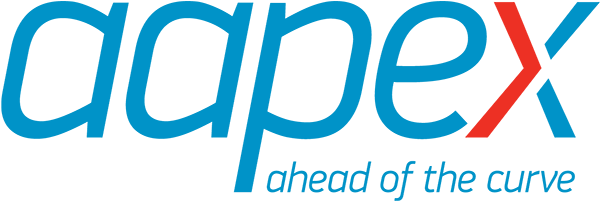Are Consumers Ready for Advanced Vehicle Technologies?
Monday, August 13, 2018

By Philip Atkins, Director, Strategic Research & Planning, AASA
There is lots of talk now about the emerging vehicle technologies – in the industry, in the media and in the halls of government. It’s with very good reason – these technologies will improve driving experience, improve safety, increase miles driven, be better for the environment and much more.
But consumers, as the car owners, will have a say in these technologies’ success by wielding that biggest marketing hammer of all: the purchase decision. For the future of our industry, we in the automotive aftermarket need to track these consumer trends closely.
Great technology doesn’t always lead to consumer acceptance, especially when it comes at a price. Some notable examples include:
• Google Glass (Google halted production months after launching)
• Segways (described by the late Steve Jobs as “as big a deal as the PC”)
• And before you think that Apple, that titan of innovation, is immune: remember the Newton PDA? Of course you don’t!
For every automotive technology, critical questions about consumer acceptance emerge. For example, advanced driver assistance systems (ADAS) and telematics have raised privacy questions – specifically, who owns the vehicle data and whether car owners can opt out?
The regulatory environment will impact electric vehicles (EVs). Will the U.S. government follow officials in China and the EU in pushing the market toward higher EV adoption through regulation? If so, how fast? And how much subsidy is the government willing to offer … and how much will U.S. taxpayers (and voters!) be willing to bear?
Distracted driving is a documented safety concern already. As more connections are added to cars – infotainment, marketing messages and more – will distracted driving grow worse?
Over the past year, we’ve seen some negative headlines involving autonomous technology and automated driving. How much impact have these stories had on consumer trust of self-driving tech? And then there is perhaps the ultimate question: Will consumers trust the vehicle to drive them and their loved ones?
Aftermarket Industry Concerns
For the automotive aftermarket, these emerging technologies mean major changes – opportunities and challenges. First is the end user, the independent repair facility and the service professionals who repair and maintain our vehicles. Will these shops and technicians be ready to repair and maintain vehicles with these emerging technologies?
Another conundrum for the aftermarket is the interconnected nature of many of these technologies. For example, EVs won’t take off until the cost of purchase is much, much closer to the cost of internal combustion engine vehicles. Yet, autonomous vehicles (AVs) need widespread adoption of EV before they can take off … and ride sharing needs widespread adoption of AV before it can take off.
Predicting what consumer group will start the acceptance of advanced technologies is another question for the aftermarket. Will acceptance be by age? How about gender? Or will it be by income? Or will all of this vary by different technologies?
Millennials are the largest generation and will ultimately be the major buying segment of vehicles with the emerging technologies. They spend less on car maintenance than other generations but are more receptive to emerging technologies. Will they be our industry’s biggest opportunity or biggest challenge?
Hear from the Experts at AAPEX
We expect approximately 162,000 automotive aftermarket professionals from 135 countries to be in Las Vegas during AAPEX 2018, so it’s no wonder the annual event is emerging as the venue for demonstrating new technologies and learning about their eventual impact on our industry.
I will moderate a discussion at AAPEX this year, “Market Outlook and Mega Trends in the Aftermarket,” featuring Tim Turvey, GM’s North America vice president, customer care and aftersales, and Karl Brauer, executive publisher at Cox Automotive. Our session will be the only AAPEXedu session to present an overview of the technologies, the car owner’s attitudes toward them and the OEMs’ plans to address them.
Turvey will explain GM’s philosophy that is based upon their development and use of these new technologies: zero crashes: autonomous; zero emissions: electrification; and zero congestion: connectivity and ride-sharing. Brauer will discuss the feedback their associates are hearing from car owners.
There will be dozens of other education sessions, demonstrations, presentations and displays at AAPEX that will focus on emerging technologies that will help position the future aftermarket as a vibrant, innovative and influential industry. Some of the sessions include:
Tuesday Oct. 30
2019 Aftermarket Outlook presented by Nathan Shipley, NPD (also offered on Wednesday, Oct. 31)
Emerging Vehicle Technologies and their Impact on the Aftermarket presented by Evan Hirsch, Strategy&/PwC
Wednesday, Oct. 31
Dongles, Shops and CRM Applications for the Aftermarket presented by Jorge Antico, eAutoClub, Inc., and Parker Swift, MechanicAdvisor
Thursday, Nov. 1
Future Vehicle Technology: Consequences to the Aftermarket presented by Derek Kaufman, C3 Network
How Telematics is Impacting National Service Chains presented by Chris Blanchette, Bridgestone Retail Operations
If you need to understand where aftermarket technology is headed, do not miss AAPEX.
See you in Vegas!
